
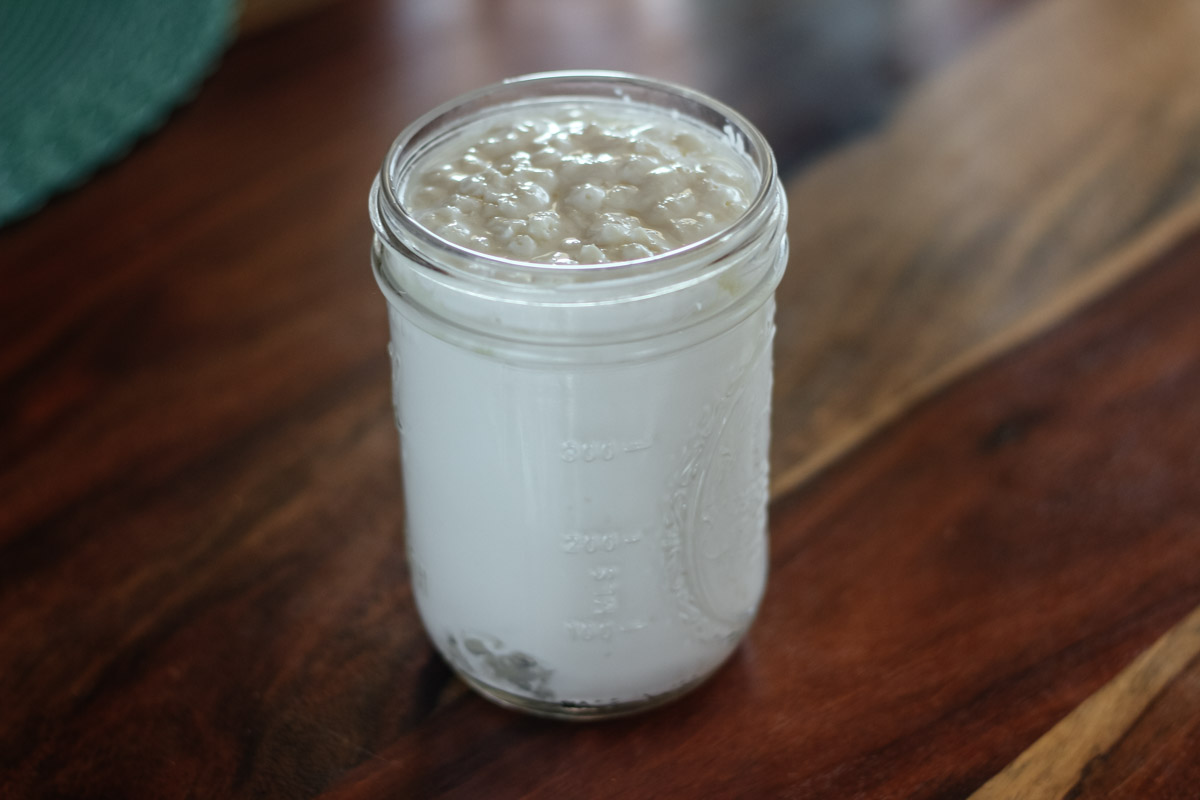 Kefir is my favorite cultured food. It has the most probiotic strains of any cultured food (over 50 strains) and is also super easy to make. It was the first cultured food I tried and it made me well in so many ways that I started on a journey to learn all I could about this magical food. Kefir is a living food and can change in texture and taste as it adjusts to changing temperatures and fermentation times. So, before you think things have gone awry and throw out your kefir, check out this FAQ page or contact me. I want you to make good kefir and I've been doing this for a long time. If anybody knows what kefir can do — it's me. I've spent over twenty-two years making this special probiotic food every day and believe you me, the kefir grains can have a mind of their own sometimes. I've figured out the likes and dislikes of kefir grains and how to make the grains better if they get stressed by situations such as lack of food or warm temperatures. One of the things I hope to do is to preserve these kefir grains for generations to come. Scientists have really tried to reproduce and make these little kefir grains and have failed every time. They have been around for thousands of years and I believe it is my job to preserve and reproduce them and share their benefits with anyone I can. Before you get rid of these little guys - or if perchance you neglect them - keep in mind a few things they've done for me and many others. So take care of them, it's important!
Kefir is my favorite cultured food. It has the most probiotic strains of any cultured food (over 50 strains) and is also super easy to make. It was the first cultured food I tried and it made me well in so many ways that I started on a journey to learn all I could about this magical food. Kefir is a living food and can change in texture and taste as it adjusts to changing temperatures and fermentation times. So, before you think things have gone awry and throw out your kefir, check out this FAQ page or contact me. I want you to make good kefir and I've been doing this for a long time. If anybody knows what kefir can do — it's me. I've spent over twenty-two years making this special probiotic food every day and believe you me, the kefir grains can have a mind of their own sometimes. I've figured out the likes and dislikes of kefir grains and how to make the grains better if they get stressed by situations such as lack of food or warm temperatures. One of the things I hope to do is to preserve these kefir grains for generations to come. Scientists have really tried to reproduce and make these little kefir grains and have failed every time. They have been around for thousands of years and I believe it is my job to preserve and reproduce them and share their benefits with anyone I can. Before you get rid of these little guys - or if perchance you neglect them - keep in mind a few things they've done for me and many others. So take care of them, it's important!
- Kefir May Help Blood Pressure
- Kefir May Help Lower Blood Sugar
- Kefir May Help Acid Reflux
- Kefir May help with Allergies
- Kefir Detoxes and Maintains Balance
- Kefir May Help Lower Cholesterol
- Kefir Has a Calming Effect on the Central Nervous System
- 7 Reasons I Have Kefir Every day
I call these little kefir grains my buddies because they sit on my counter and make probiotics in my food effortlessly. They can do the same for you so give your body some kefir and then give it time to heal.
Frequently Asked Questions About Milk Kefir
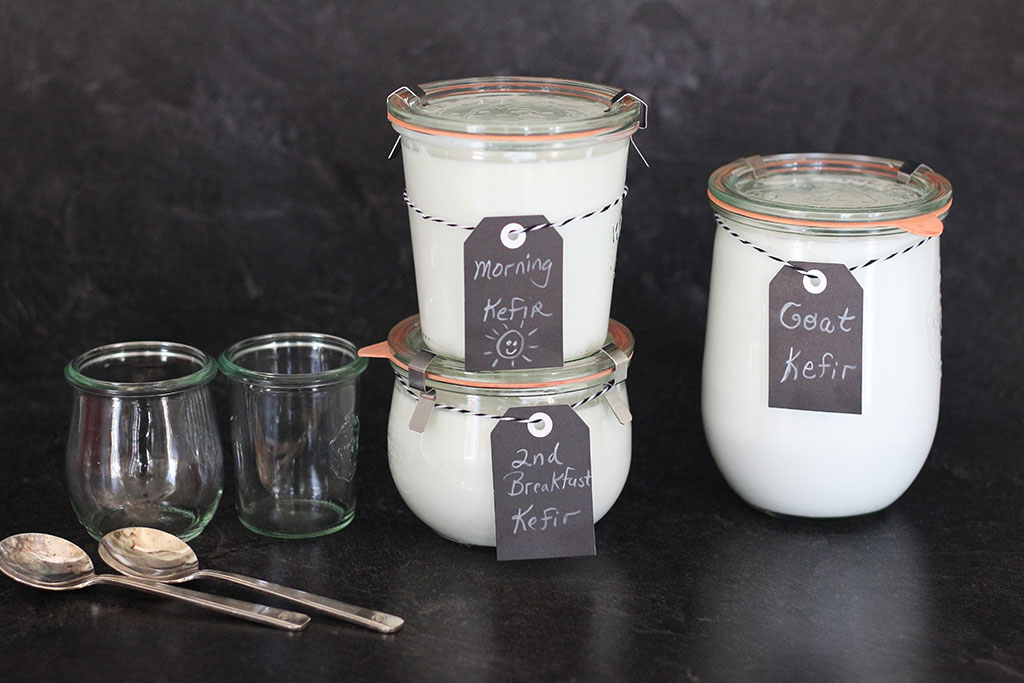
What kind of milk can I use to make kefir?
You can make kefir with a variety of milks - dairy, goat's milk, and non-dairy milk. Most milk types are acceptable, including whole milk, fat-reduced, non-fat, pasteurized, and homogenized. Fresh raw whole cow’s milk is delicious, too! Please don’t use ultra-pasteurized milk when making kefir. Your kefir won’t do well. Many times organic milk that you purchase from a store is ultra-pasteurized, even if it does not say "ultra-pasteurized." So if you choose to use organic milk, make sure you know what you are getting and that it’s not ultra-pasteurized. The problem is that ultra-pasteurized milk is heated at high temperatures longer than regular milk causing many problems when making kefir. Remember that kefir will add enzymes and good bacteria to pasteurized milk and make it a new food; but when it is ultra-pasteurized or heated for long periods, the milk is no longer viable for making kefir. Any other type of milk, including raw milk that you get from your local farmer, is still perfectly fine!
Non-dairy milk can make kefir, too, be it coconut, almond, cashew, oat, flax, and more! Check out this article to learn what to do if you're using non-dairy milk.
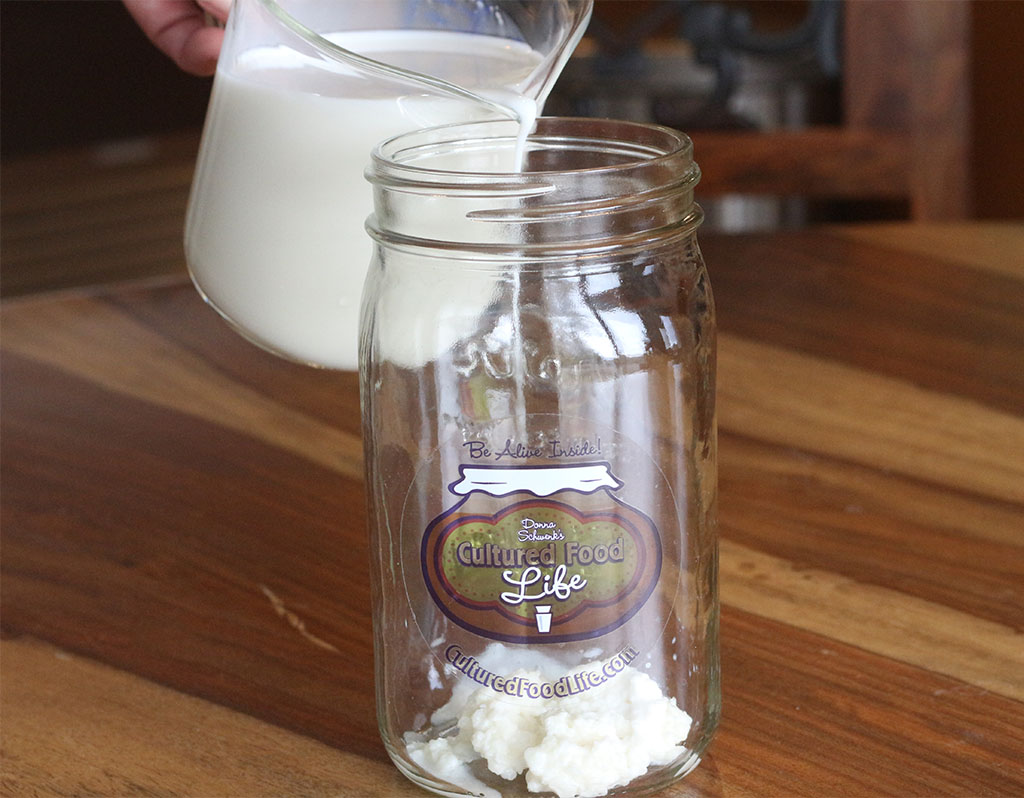
My Kefir Smells Yeasty
If your kefir has a strong yeasty smell it can be a couple of things.
If you're using raw milk with the cream the cream can give it a yeasty smell since it doesn't have very many carbohydrates. I always remove the cream before making kefir since I don't like the taste or smell.
It can also be because the good yeasts in kefir such as saccharomyces kefir and torula kefir, have become stronger than some of the bacteria and produce a strong odor. You want the good bacteria to be the main factor so you need to give the grains more milk and a Prebiotic like Prebio Plus and then you'll get tons of good bacteria and not just good yeasts which are more powerful in health benefits.
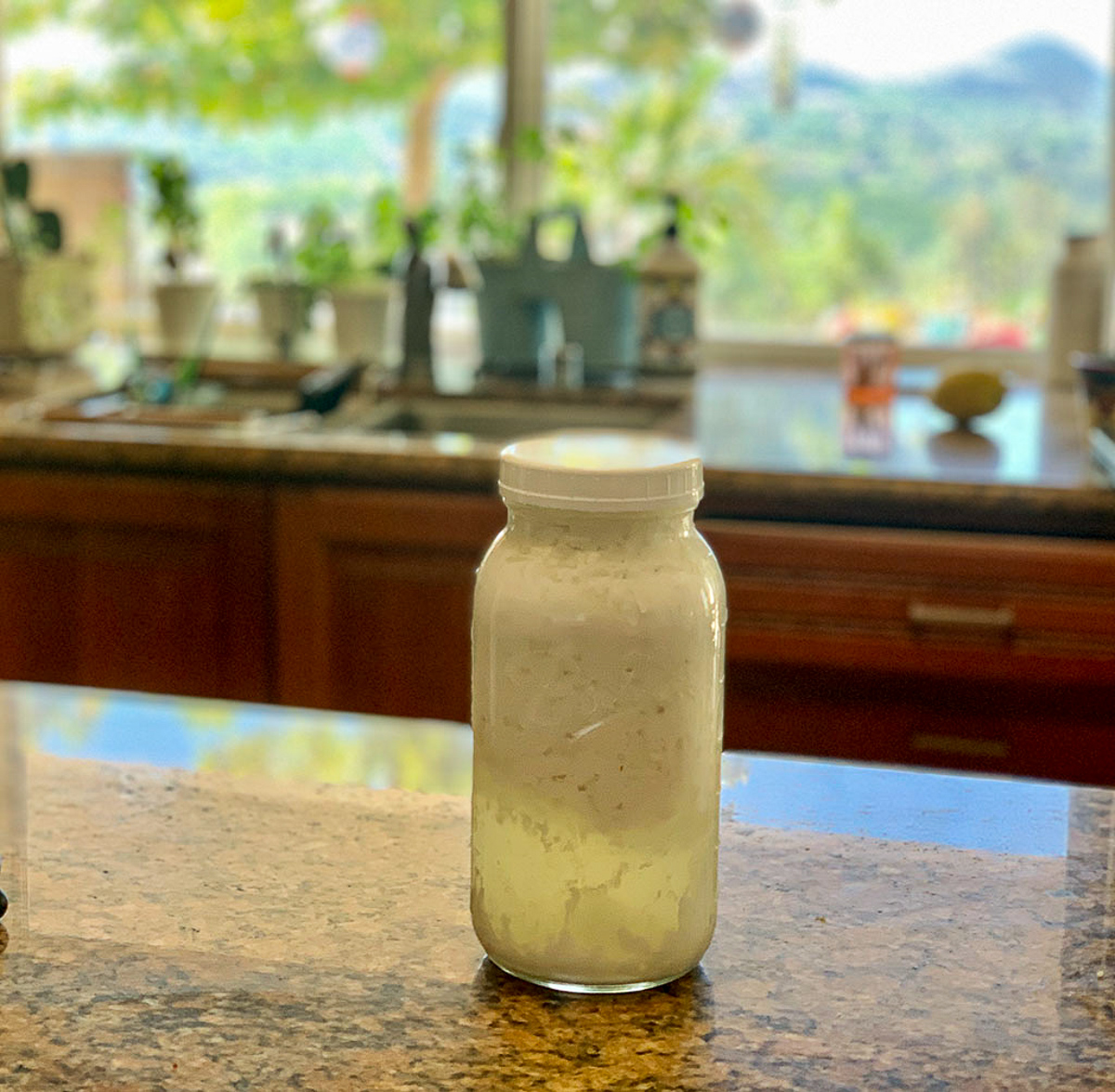
Why is my milk kefir starting to separate and curdle?
I get more emails about kefir separating into whey and curds than any other question about cultured foods. It can happen because the grains are growing or the temperatures have gotten warmer or a few other things. It's not a bad thing and the kefir is still good, so don't throw it out and think it's no longer good. Kefir grains are extremely active and strong. They will multiply quickly and before you know it, the grains will need more milk. They'll start fermenting so fast you will think that your kefir is not done because it's thin when actually the opposite is happening. If the grains have increased and you have not added enough milk, they will ferment the milk faster and you might not notice that the kefir is ready and thick. Then as it sits longer, the kefir will start to separate into whey and curds. It can create quite a panic for people and they fear they have done something wrong. Many will throw this over-fermented kefir out. Don't do that, it's still good! First, let me say it is never ruined, it is just really fermented and sour. One of two things has happened.
First, you may have too many grains for the amount of milk you are using and need to add more milk or remove some of the grains.
Secondly, your house is warmer and it is fermenting faster and, again, you will need to add more milk. If you see clear yellowish liquid and curds, it is over fermented and has passed the thickening stage. It is now separating into whey and curds. Again, this is not bad - it's just a little more sour and may be less appealing.
Don't give up if it's over fermented - there are lots of things you can do. Check out the video and more tips below!

I’m going on vacation. How do I keep my grains alive and happy while I’m gone?
Storing kefir grains for a week: Place your kefir grains in milk. If you have 1 tablespoon of grains, store them in at least 2 cups of milk, 3 is better. I like to make sure that they have plenty of food to eat. If you have more grains, add more milk accordingly. Then you place this in the refrigerator. This will last for one week. Coming home: When you return home strain off the milk that the grains were resting in and discard (you can also give this to pets!) and put them in new milk to make kefir.
The grains will be a little slower making kefir when you first take them out of the fridge. The cold slows them down a bit, but the second time you make kefir they will be back up to speed.
Longer than a week: If you're going to be gone for more than one week, then I recommend you freeze them in powdered milk. Place powdered milk in a rectangular food storage container covering the bottom with powdered milk. Then place the grains in the powder milk layer and sprinkle them with more powdered milk until they're completely covered in powdered milk. The more the better. Cover the container with a secure lid. I use a rectangular food-grade storage container. You can use glass containers or plastic ones. Silicon containers will work too.
Then place in the freezer. You can store this for several months and they should be fine. They will take a little while to wake up when you remove them from the freezer, but once they thaw, place them in fresh milk even though they'll have powdered milk on them. After a few days of making kefir, they should be fine. Freezing kefir grains should only be done once in a while. Freezing and thawing them continuously can diminish or kill them, but once or twice a year should be fine. When you thaw them, add a scoop of Prebio Plus to help them wake up. It may take longer than 24 hours to culture the first time with the added food from the Prebio Plus but will make a big difference in how they perform.
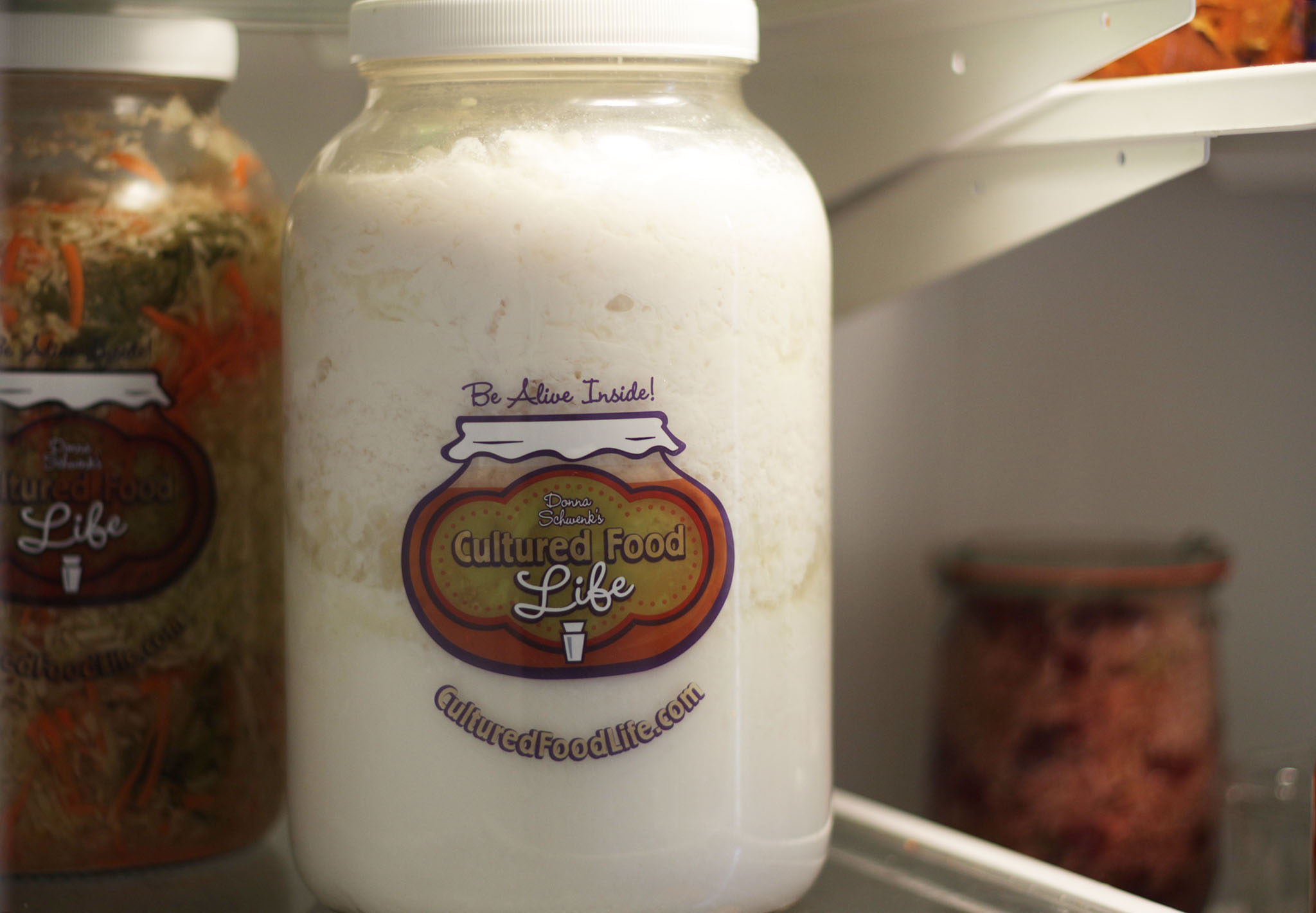
I left my milk kefir grains in the refrigerator for a few months. Are they still good?
Probably not. Kefir grains eat the milk sugars (lactose) out of the milk to live and to make their bacteria. This is why the milk gets more sour. When the grains run out of food, they begin to die. They’re living organisms and need food. Treat them like a pet and make sure you feed them. The only way to tell is to try to make a jar of kefir. If the milk turns sour and tart tasting then the good bacteria is working and your grains should be fine.
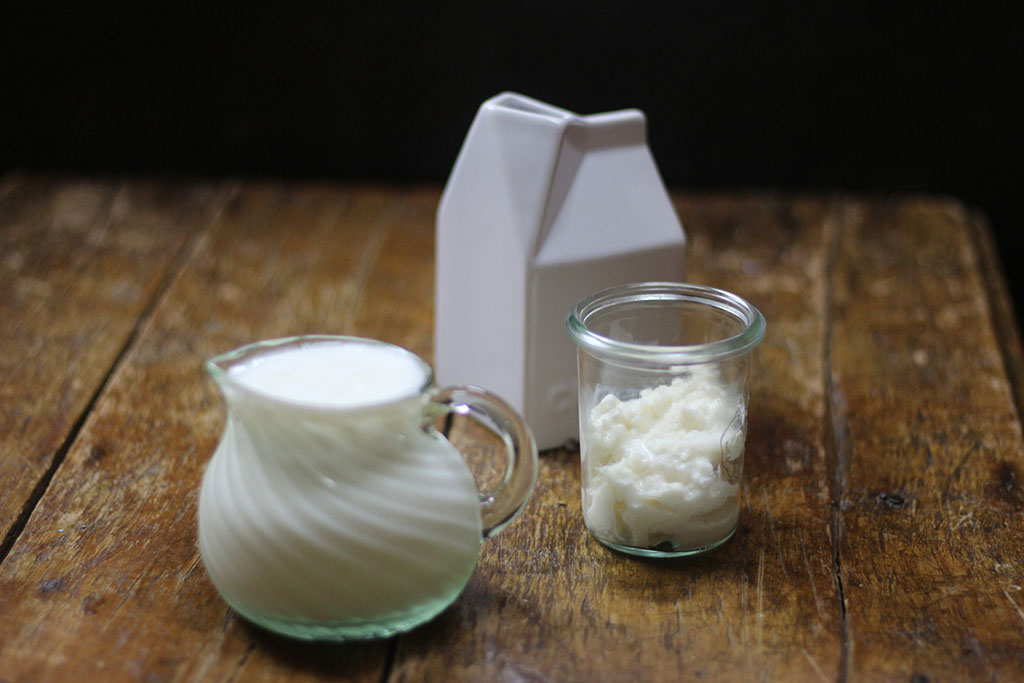
I stored my milk kefir grains in the fridge for a week. Is the milk that the grains were stored in okay to drink?
The milk that the grains were stored in is not really kefir. It won’t hurt you to drink it, but it probably won’t taste very good. Milk needs to culture at a warmer temperature to really turn into kefir. Always give the grains new milk when bringing them back on the counter to culture. There won't be enough lactose left in the milk to culture properly if you don't give them fresh milk.
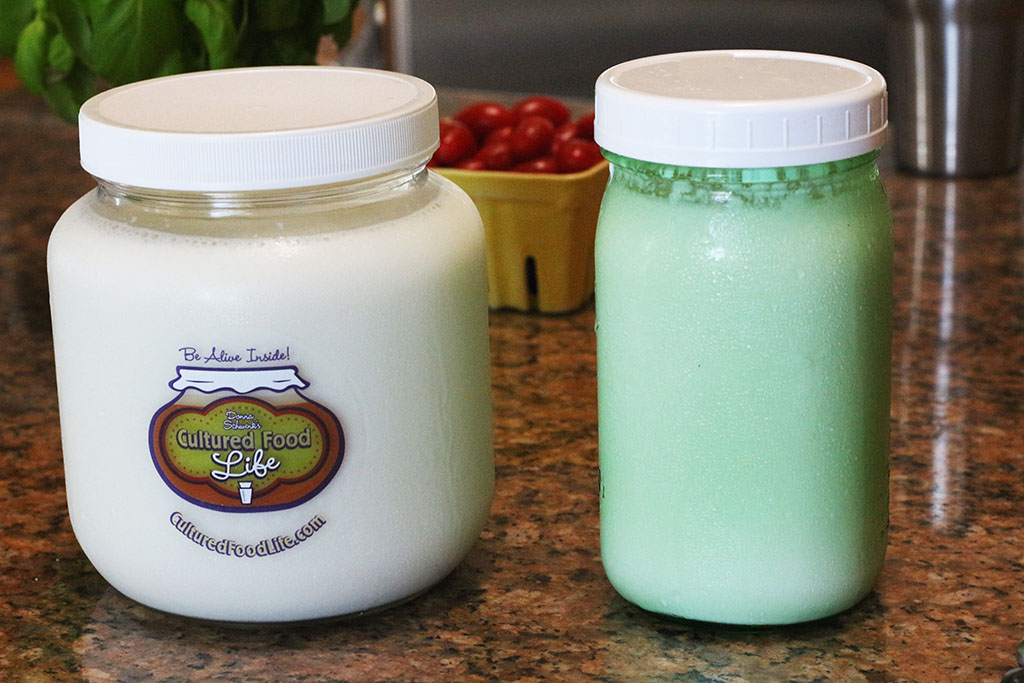
Do I culture milk kefir with a lid or with cheesecloth?
I always culture my kefir with a lid on. I use a one-quart glass canning jar with a plastic lid, but a metal lid is also fine as well. Many people have trouble when they use a cloth and rubber band due to wild yeast or cross contamination from other cultures. They can get a fuzzy pink yeast on their grains; although this isn't harmful, it can can change the taste of your kefir, so I always recommend a lid.
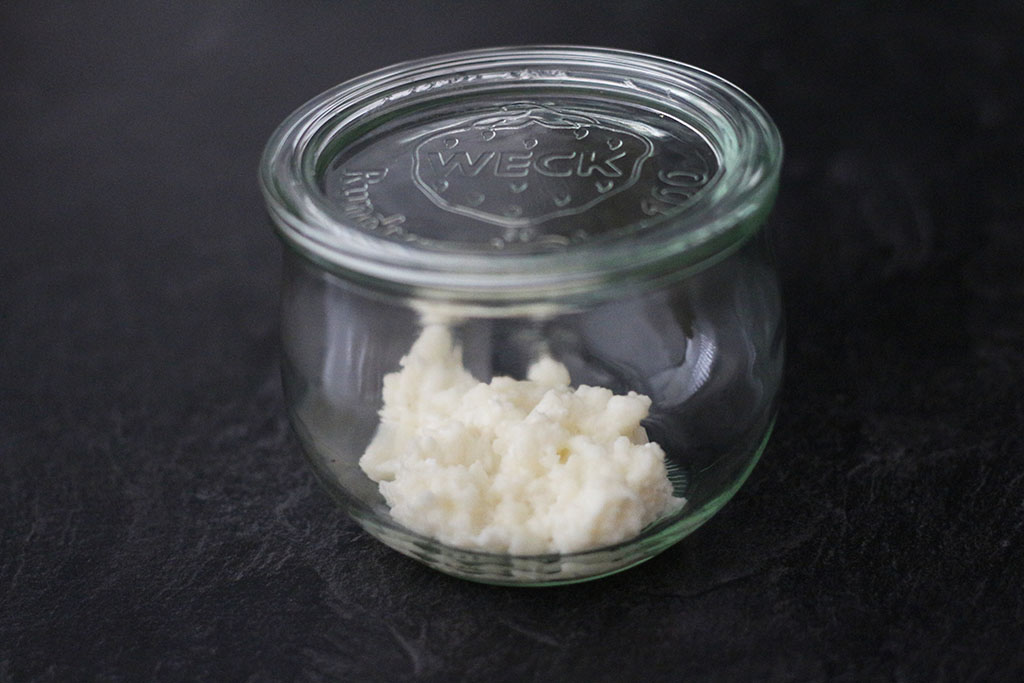
Why aren’t my milk kefir grains growing?
If you are making kefir every day, your grains should be growing and multiplying. If they aren’t, it is because the temperature in your house is cooler than usual (which slows down the grains), or your kefir grains have died, or you are using dehydrated kefir grains which I don't recommend. Although they make kefir, they don't grow and multiply so you're not receiving the full benefits.
If your milk is turning into kefir by becoming sour, your grains are still working, just at a slower rate. You can purchase more or get some new grains from a friend if the milk doesn't sour.
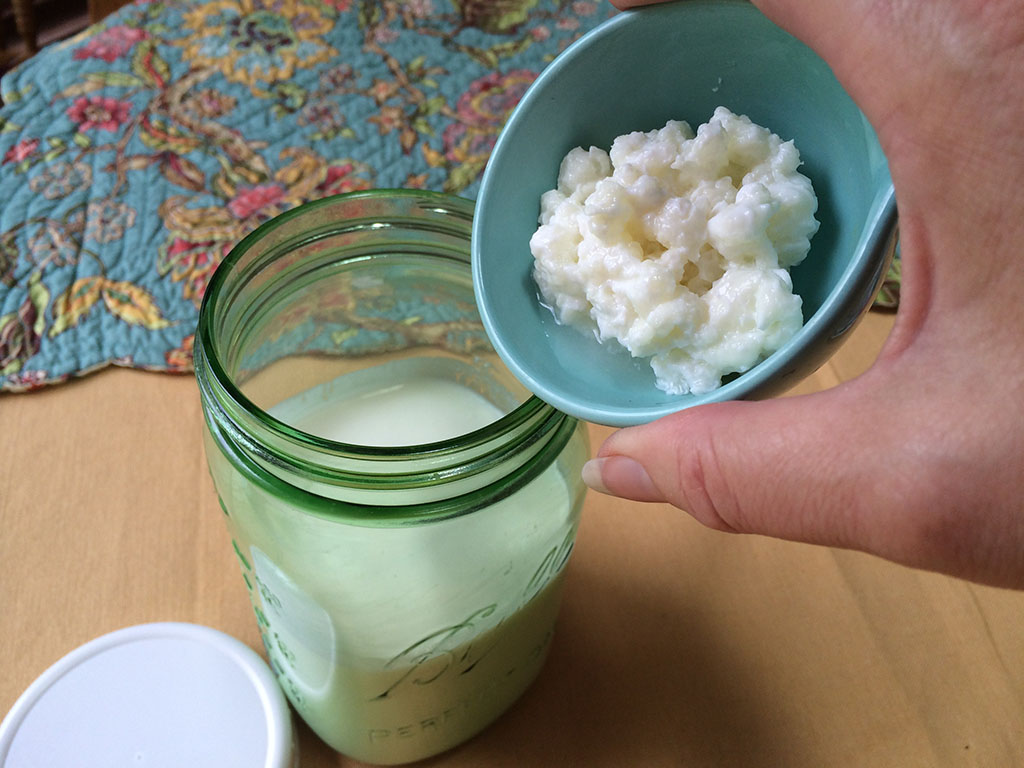
How do I know if my milk kefir grains are still good?
They will culture your milk and turn it sour and thick within 24 hours. Make sure that you have enough grains for the amount of milk that you are using or it will separate into whey and curds. This is still okay to drink, but it will be thick rather than thin. Check out this video to see more.
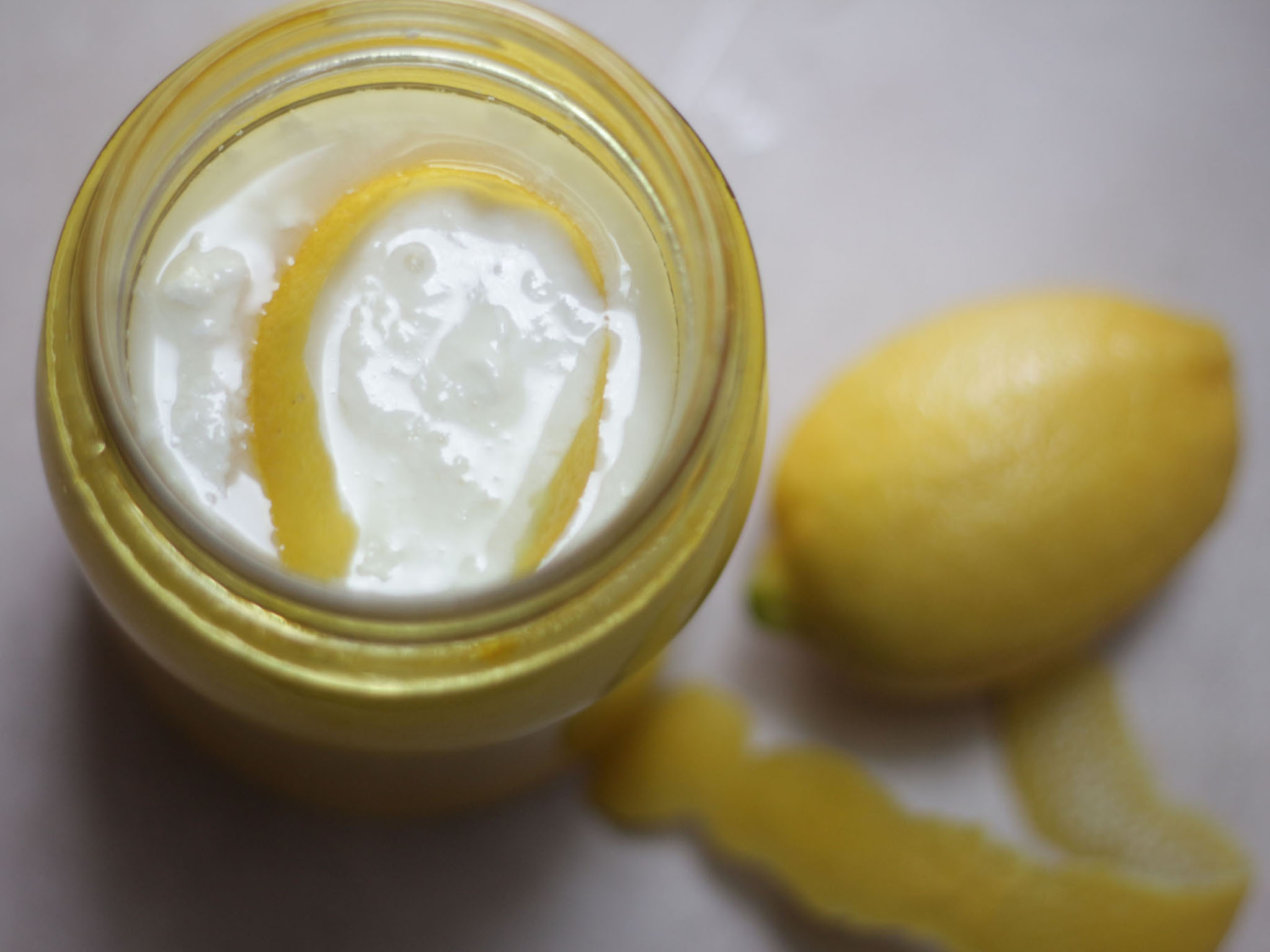
How do I second ferment my kefir?
Many years ago I discovered a way to make kefir not only taste better but also increase the nutrients in it. It is the only way that I make my kefir now because it is so delicious. The process is called "second fermenting." I have to admit that the reason I second fermented my kefir is that it tasted so much better and the nutrients and vitamins will skyrocket!
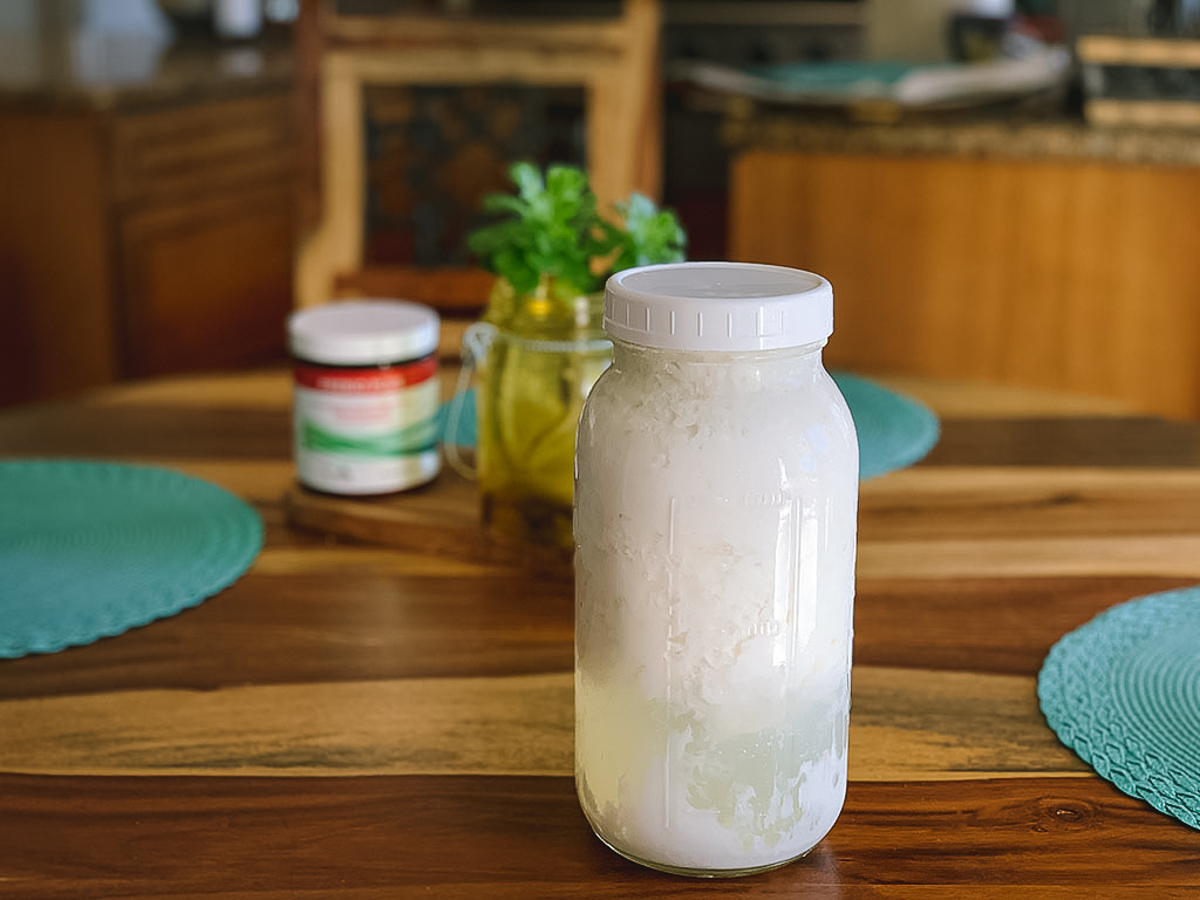
How do I make my kefir creamy again?
Has your kefir been fermenting faster and turning into curds and whey before you know it? In the summertime, kefir can change and many people think something is wrong with their kefir. Then they throw it away which gives me complete anxiety! Don’t throw it away, it’s still good. Let me help you fix it. As your kefir grains grow and multiply and as the days get warmer, kefir starts fermenting really fast, and before you know it the kefir has passed the thick and creamy stage and turned into whey and curds. This does not look very appetizing and can often taste really sour. Here are tips to make your kefir creamy again.
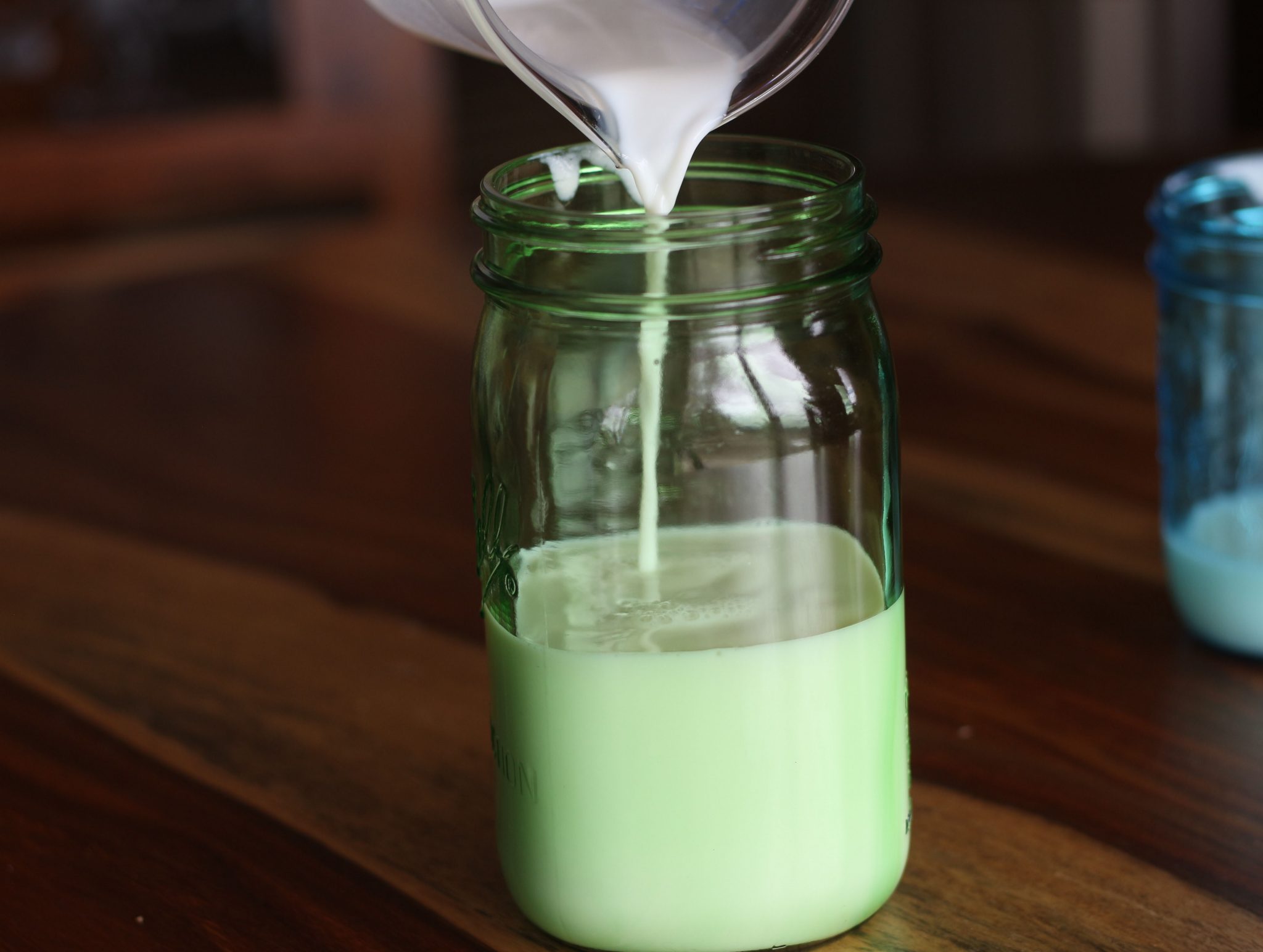
Why is my kefir too sour?
Perhaps you've seen this happen, and it even happens to me from time to time: my kefir will get really sour tasting. This can happen for several reasons.
- During your first ferment, you let your kefir ferment too long on your counter, or your house might be warmer than usual.
- Kefir will also ferment more quickly if your grains have grown and multiplied, and you didn't increase the milk or remove some of the grains.
- You leave your finished kefir in the fridge for a long time and don't drink it. Remember that kefir still ferments a little in your fridge. The longer it is in there, the more the bacteria will eat the sugars out of the milk and make it sour.
Here are ways to take the tartness out of your kefir.
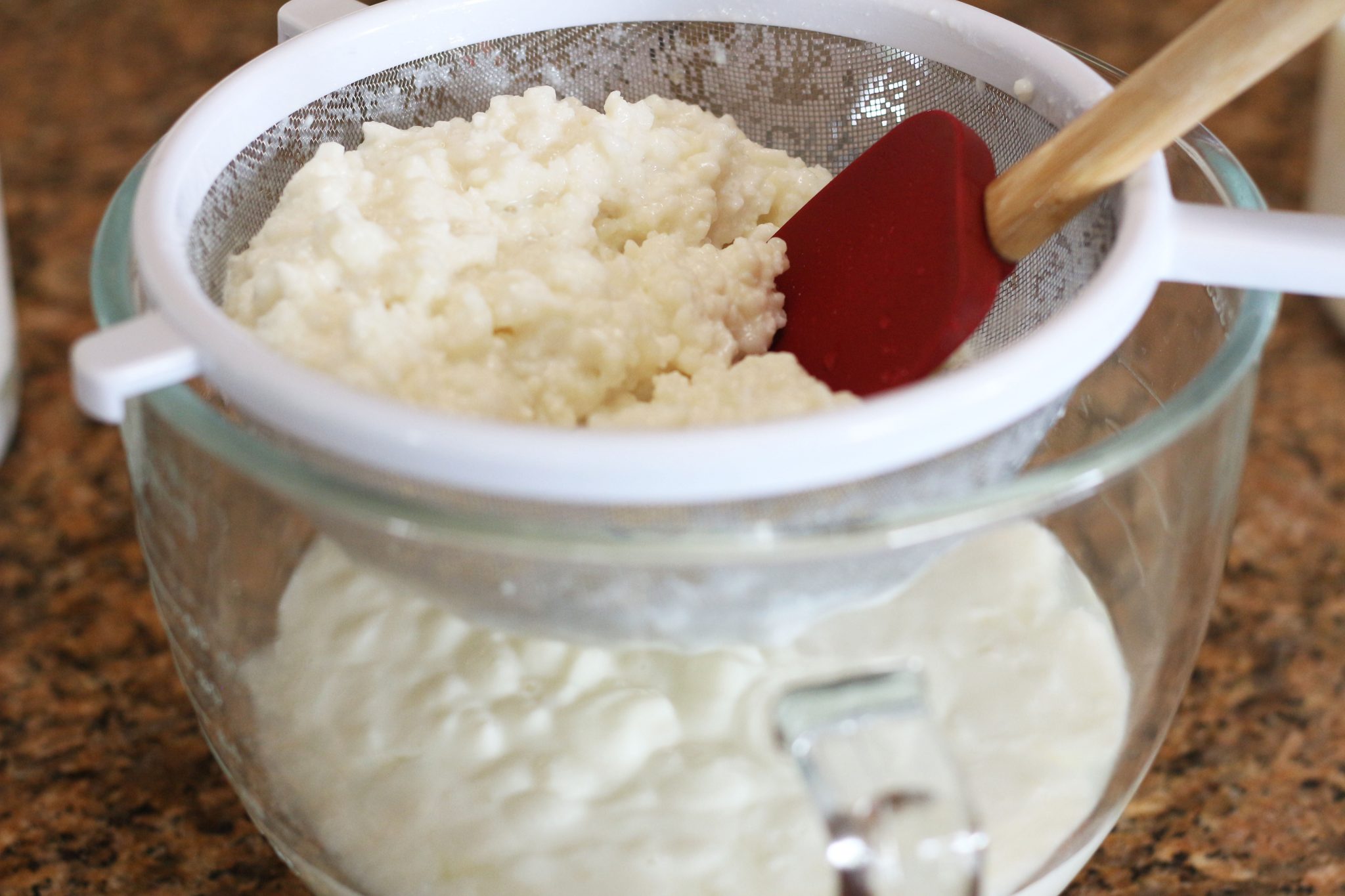
How do I strain thick kefir?
I love kefir that is thick like yogurt. However, it can be difficult to strain out the kefir grains sometimes. There is a super easy remedy for this. Enjoy the benefits of kefir and find an easy and quick way to strain it. Check out the video for tips.
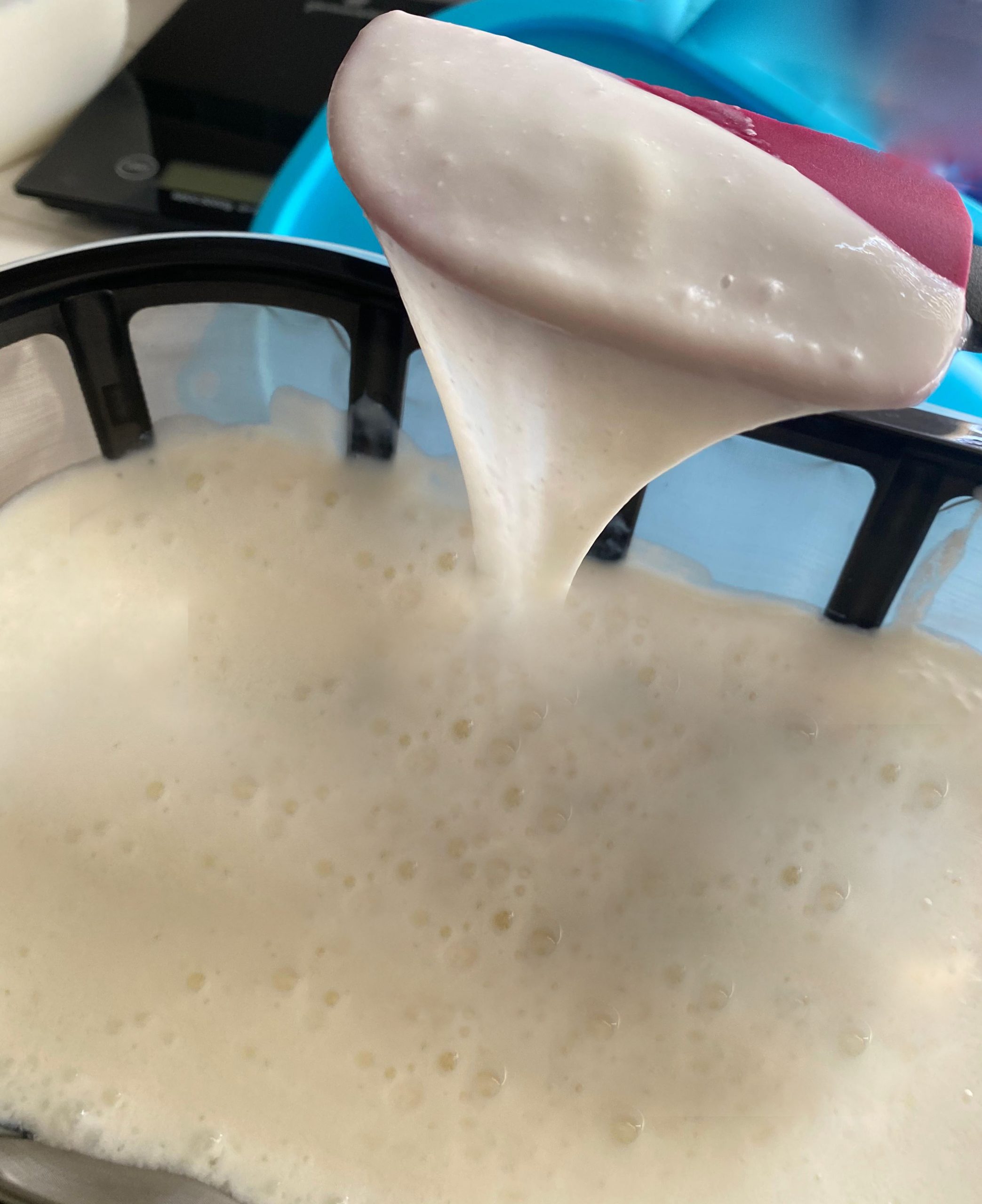
Why is my kefir slimy, gloopy, or stringy?
If kefir gets stringy, slimy, or gloopy, or even a glue-like consistency, these changes are known as kefiran and they are a gel-forming soluble polysaccharide. This polysaccharide is similar to the same compounds found in starch, cellulose gum, and glycogen. Bacteria, fungi, and algae have all adopted an ability to produce this as a form of protection from drying out, reproducing, and adhering to their food source more efficiently. This can make changes in the viscosity of the kefir. This makes the good yeasts start to become more proficient and this can create a slimy texture. Kefir can ferment at different temperatures; but as it does, some of the strains of yeasts and bacteria will perform much better, while others may be temporarily suppressed by changing the texture. Kefir grains like a stable environment with minimal and gradual temperature changes.
It could also mean you're not giving your grains enough milk or feeding them on a regular basis. This can also happen if you keep them in the fridge for long periods of time and then the yeasts start to dominate. In any of these cases, you need to give them more milk than you previously were giving them, to help them gain their balance again and ferment more regularly.
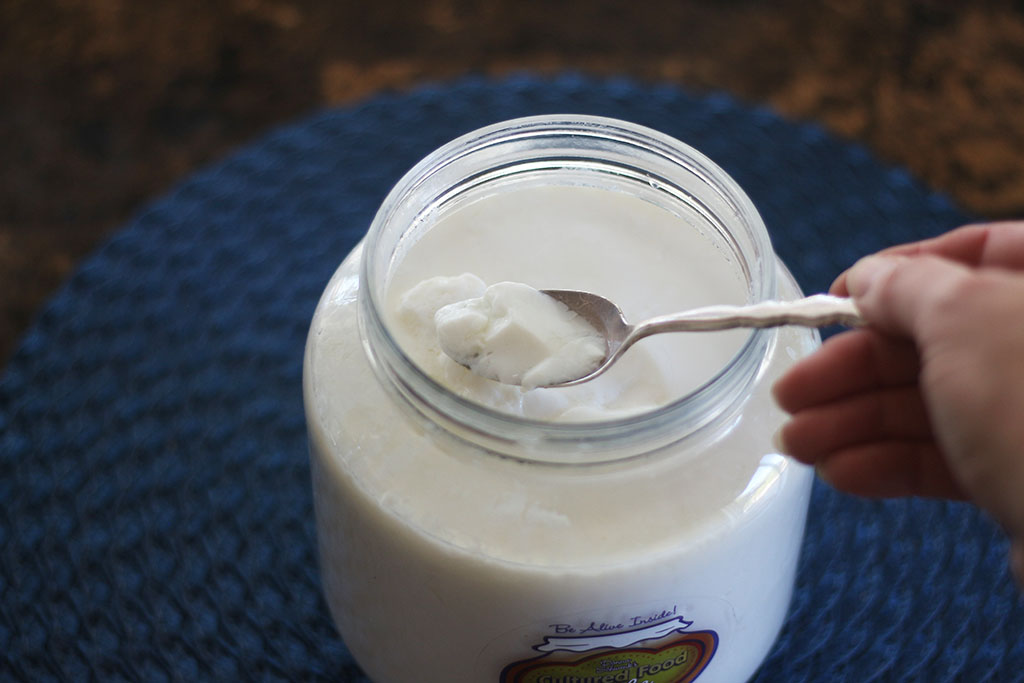
What is winter kefir?
I love winter kefir! It’s often creamier and thicker than summer kefir. Kefir acts differently in the winter than in the warmer months of the year due to cooler temperatures that make it ferment more slowly.
Kefir ferments in 24 hours at 69-73 degrees, but drop those temps and have a lot of fluctuations and it’s going to take your kefir longer to ferment. This is for both Easy Kefir and kefir made with grains. It could take an extra day (total 48 hours of fermentation) to really turn tart and kefir-like, and perhaps longer if the temps are lower than 64 degrees. Check out this article for more tips on fermenting kefir in the winter time.
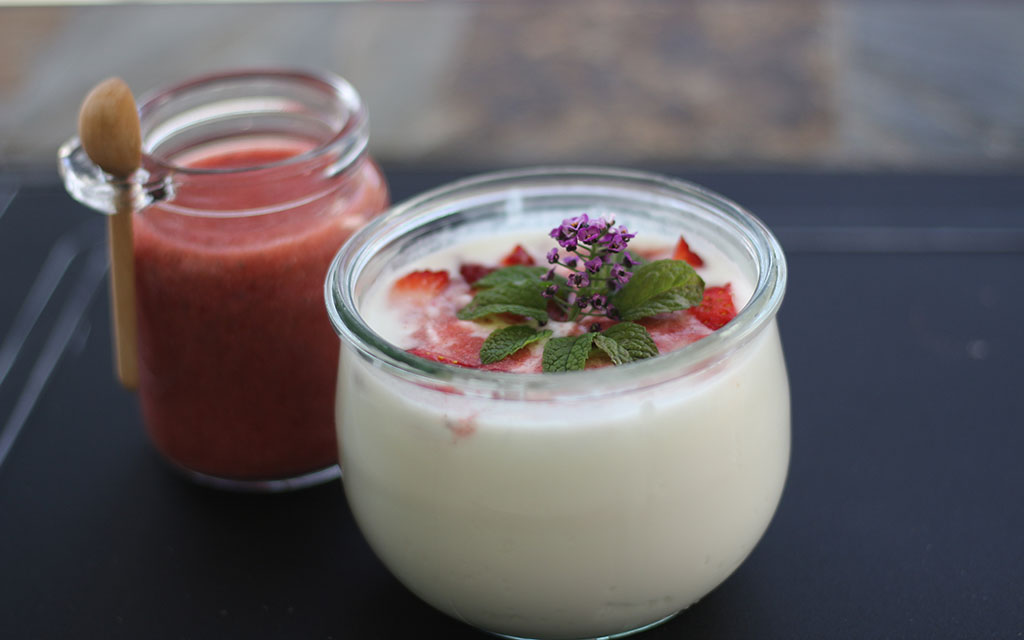
What is summer kefir?
Kefir is a living food that tends to have a mind of its own. It ferments differently in the winter than the summer, so understanding the process can make a huge difference. It will ferment much faster in warmer temps and sometimes you'll need a little extra help. Check out seven tips to help you make great summer kefir.
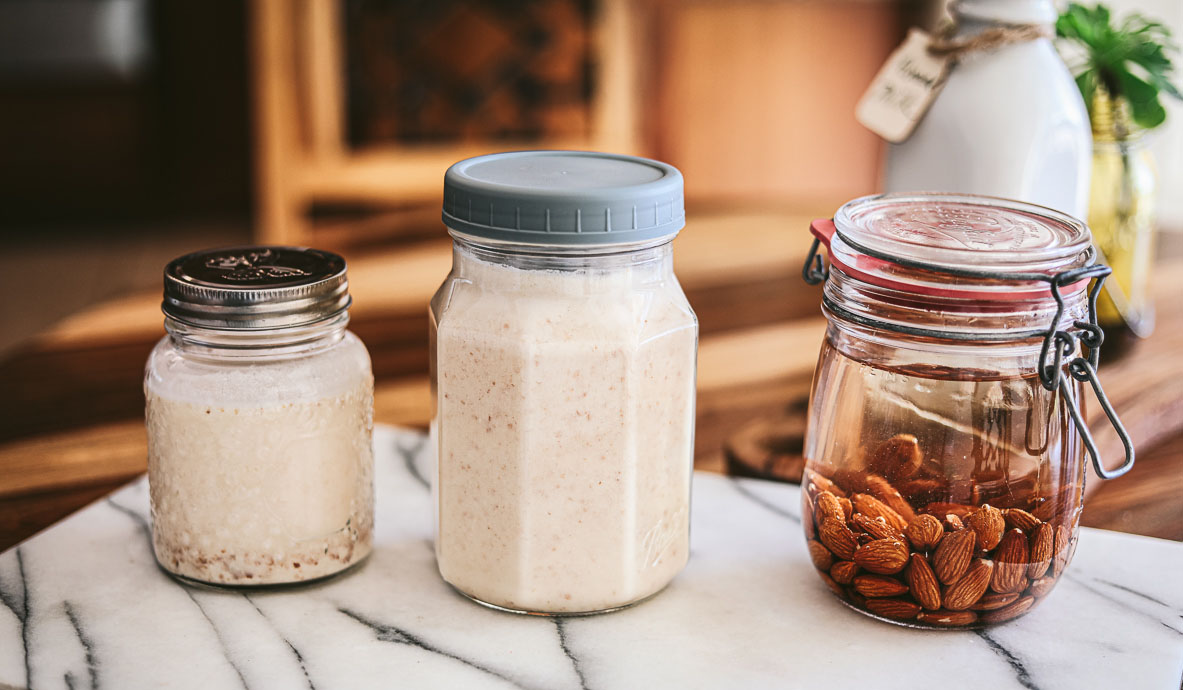
Can I make dairy-free kefir?
I have seen many people benefit from kefir, and this includes non-dairy kefir. So many people need a dairy-free version, so we created just about every kind of non-dairy kefir we could think of. Non-dairy kefir is usually thinner than regular kefir, so it separates into whey and curds since most non-dairy kinds of milk have a lot of water in them. Don't worry, this is ok and doesn't mean it's over fermenting. This is just from the water content separating from whatever grains, seeds, or nuts you're using. It's still loaded with tons of probiotics and nutrients. When it separates, just shake it up before you use it. I also have recipes to make thicker non-dairy kefir. Check them out below.
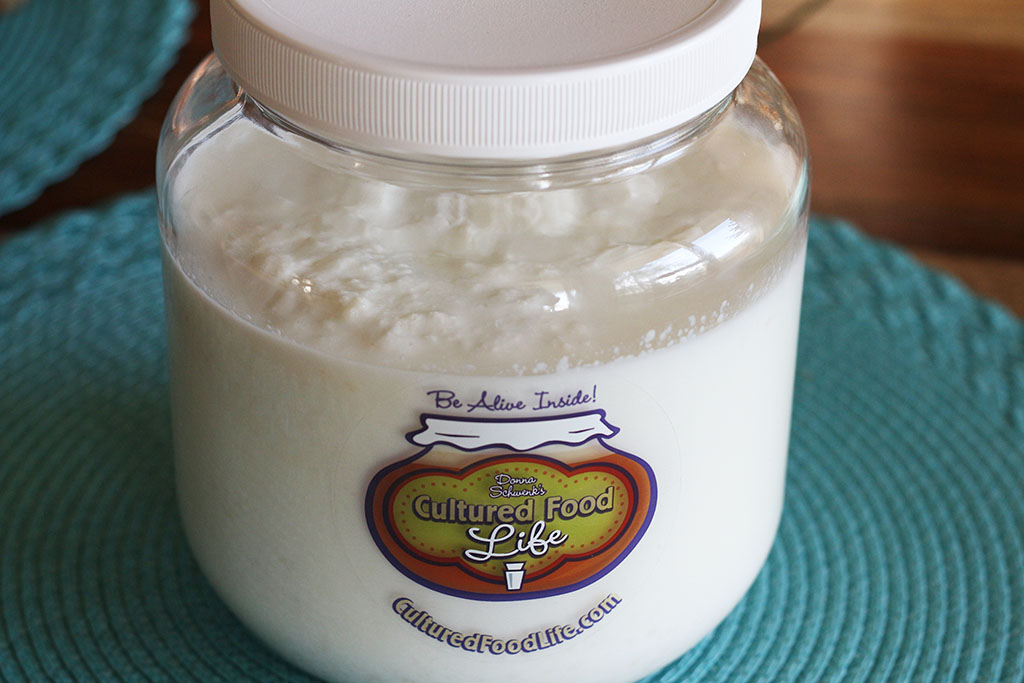
How Do I Make My Kefir Fizzy?
You can't always get kefir to be extra fizzy, it all depends on how many good yeasts you have in your kefir that allows this to happen. Saccharomyces kefir and torula kefir, are the two yeasts in kefir that ferment the lactose into a small amount of alcohol and carbon dioxide, which is responsible for the carbonation. Don't worry it's not a lot of alcohol its a normal amount that is in many foods like yogurt and fruit. But in order for kefir to be really fizzy then the good yeasts have to dominate and not the good bacteria which you really don't want. You want the good bacteria to be the main factor and then you'll get tons of good bacteria and not just good yeasts which are more powerful in health benefits. Always use a lid when making kefir and not a cloth and rubber band to allow the good yeasts and bacteria to do their thing and make great kefir.
Listen To My Podcast
Kefir is my favorite cultured food. It has the most probiotic strains of any cultured food (over 50 strains) and is also super easy to make. It was the first cultured food I tried and it made me well in so many ways that I started on a journey to learn all I could about this magical food. Kefir is a living food and can change in texture and taste as it adjusts to changing temperatures and fermentation times. So, before you think things have gone awry and throw out your kefir, check out this podcast or my FAQ page or contact me. I want you to make good kefir!
Are you on the list?
Sign up today and I'll send you my free Getting Started Guide!
Each week I'll send you updates, tips, recipes, and more! You might even be a winner of my weekly giveaway! (starter cultures, memberships, and more!)
Come be a part of my cultured food family!


